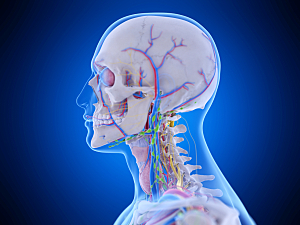One of the challenges in studying the genetic basis of cerebrovascular diseases is the difficulty of collecting fresh intracerebral vessels for use as controls. Some experts use the superficial temporal artery (STA) as a control because it’s clinically accessible. Still, it originates from the external carotid artery rather than one of the intracerebral vessels where cerebrovascular pathologies arise.
Addressing this concern in comparing human cranial vasculature, researchers at Brigham and Women’s Hospital determined the middle cerebral artery, circle of Willis, and paired STA are all feasible control vessels for transcriptomic studies of cerebrovascular diseases.
Jianing Zhang, PhD, a research fellow in the Department of Neurosurgery, Rose Du, MD, PhD, director of Cerebrovascular Surgery in the Center for Cerebrovascular Diseases, and colleagues provide evidence for this conclusion in Translational Stroke Research.
Methods
The researchers used RNA sequencing to compare the transcriptomic profiles of four groups of tissue:
- ANEU—Aneurysm tissue collected from 11 patients with intracranial aneurysm
- STA—Paired samples of STA obtained from six of the patients with intracranial aneurysm (first control group)
- MCA—Normal middle cerebral artery samples collected from five patients with epilepsy and without intracranial aneurysm (second control group)
- AU—Artery samples obtained from the circle of Willis of four autopsies without known intracranial pathology (third control group)
Results
Some key findings were:
- Principal component analysis showed the gene expression profiles of the STA, MCA, and AU groups were similar to each other and diverged substantially from the ANEU samples
- The same was true for the coefficient of variation of gene expression
- Compared with the ANEU samples, all control groups presented similar responses in the activation of immunological processes, regulation of intracellular signaling pathways, and extracellular matrix production despite their intrinsic biological differences
- Most cell signatures detected in ANEU samples were also present in STA samples
Caveats for Researchers
Although arteries from different control groups appeared similar to each other when compared to pathological ones, distinct variances resulting from differences in individuals, physiological states, and anatomies still seemed to have effects at the gene expression level. When interpreting disease-associated genes and processes, these unmodifiable factors inherent in control groups should be considered.
A few genes (e.g., MFAP5, CD36, and SERPINE1) were upregulated in ANEU and STA samples compared with MCA and AU samples. These genes may be associated with the development of aneurysms as inherited risk factors and would not be discoverable with STA tissue alone as a control. Multiple control tissue groups will be optimal for discovering inherited and non-inherited changes in the transcriptome.
